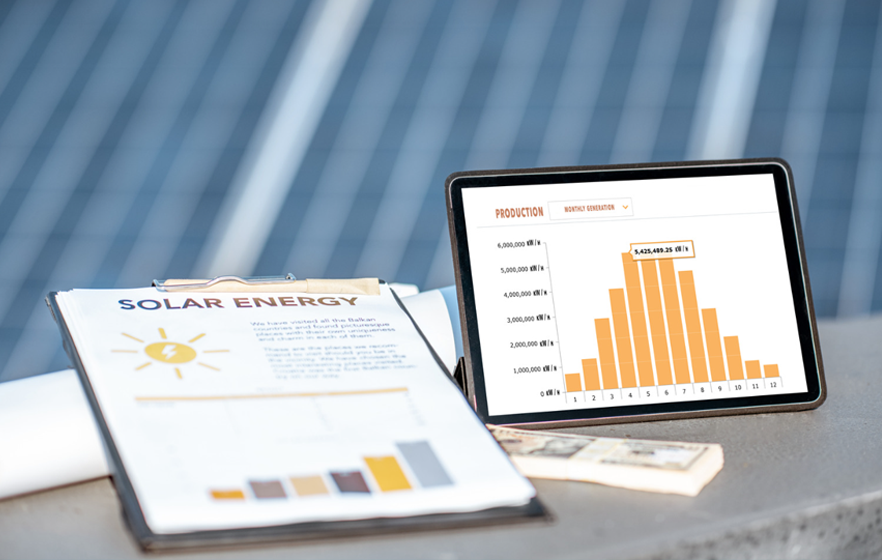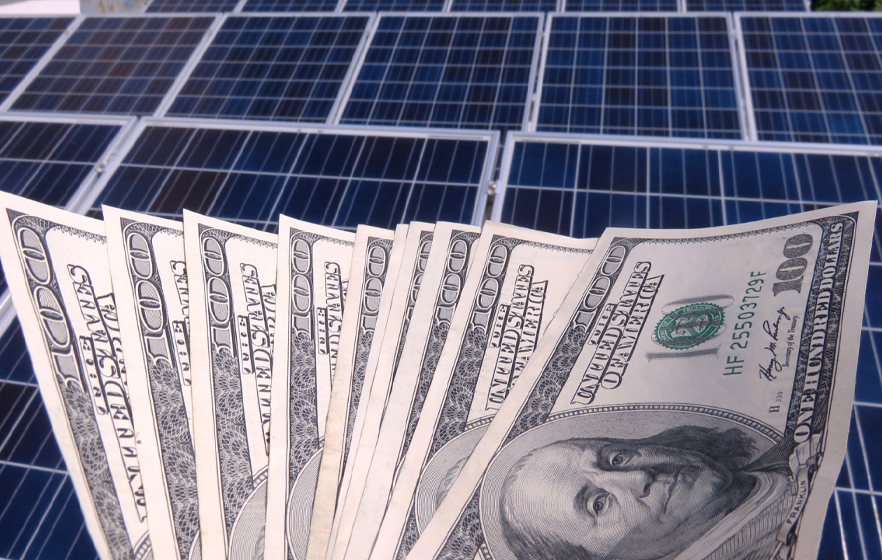
The Residential Clean Energy Credit allows you to reduce solar costs by 30 percent through 2032.
With increasing electricity and home energy costs, the Inflation Reduction Act makes installing solar panels and storage batteries a more attractive investment for many homeowners than it was even a couple years ago.
The new legislation's Residential Clean Energy Credit allows you to subtract 30 percent of the cost of installing solar heating, electricity generation, and other solar home products from your federal taxes. The credit is a reboot of an older, less valuable federal tax credit and will be available to taxpayers for more than a decade. That means homeowners considering solar installations have plenty of time to consider their options.
Main Points:
What Is the Solar Tax Credit?
If you install solar energy equipment at your home before 2032 ends, you can receive a nonrefundable credit for 30 percent of eligible expenses on your federal taxes. There’s no limit to how much money you can spend; even if costs associated with a residential solar system amount to more than $100,000, you will still get the percentage back in taxes.
What Expenses Are Eligible for the Solar Tax Credit?
According to the Department of Energy and the new law’s language, the same expenses covered under the old law are eligible for this new solar tax credit:
- Solar photovoltaic (PV) panels.
- PV cells used to power an attic fan (but not the fan itself).
- Contractor labor for onsite preparation, assembly, or original installation.
- Permitting fees, inspection costs, and developer fees.
- All equipment needed to get the solar system running, including wiring, inverters, and mounting equipment.
- Storage batteries. (You can claim the tax credit for these even if you buy and install them a year or more after you install the solar system.)
- Sales taxes on eligible expenses.
The new law stipulates that eligible battery storage units must store at least 3 kilowatts.
How Will the Solar Tax Credit Save You Money?
If you spend $24,000 on a system, you can subtract 30 percent of that from your federal taxes. For example, if you would owe $7,000 in taxes before the credit , a $7200 credit would drop what you owe to zero. The remainder cannot be refunded however it could be carried forward into a later tax year.
Not only will you conserve energy, but your electricity bills will go down as well. Your savings rely on several conditions such as how often your family uses power, the dimensions of solar system, and how sunny it is where you live. Also, when the time comes that you want to sell your home, its value will increase because potential customers see that there is already a Solar Panel installed.
How Long Does the Solar Tax Credit Last?
The 30 percent credit for solar installations will last until December 31, 2032. After that date, it drops to 26 percent in 2033 and then 22 percent in 2034 before disappearing completely in 2035, unless Congress extends the credit. (The new law replaces an older law that was set to expire in 2024 and would have provided a 26 percent credit for solar installations this year followed by a 22percent credit next year.)
Who Can Get the Solar Tax Credit?
The opportunity is available to all American taxpayers for either their primary or secondary residence. Taking advantage of it is possible for people at any income level - whether you itemize your taxes or take the standard deduction matters not.
The solar tax credit is accessible only if you buy a solar system; you cannot claim the credit if you lease one. The same goes for members of power-purchasing cooperatives. Although, If you are a tenant-stakeholder in a co-op, you can receive credit for your percentage of the purchase. You can also get credited for your stake of a community-owned solar system's purchase.
Do You Still Get the Federal Tax Credit If Your State Also Offers One?
The new law doesn’t reduce your federal credit if your state also offers one. But it will be up to your state’s taxing authority whether your state credit is reduced if you take advantage of the federal one.
New York, for example, does not cut its solar incentives for people who take advantage of federal ones; state residents can credit 25 percent of qualified solar energy system equipment expenditures from their state taxes, up to $5,000. You don’t get a refund if that amount is more than what you’d owe, but you can carry over the difference for up to five years.
Can You Use This Credit If You Also Use Other Federal Energy Tax Credits?

The new law not only includes an improved Nonbusiness Energy Property Credit, but also other qualifying efficiency upgrades. These include energy-saving exterior windows and doors, air-sealing insulation, upgraded electrical circuit panels, and heat pumps--all of which can help save you money. You're allowed to claim both credits on your federal return as well.
This credit, now named the Energy Efficient Home Improvement Credit, has dollar caps for some products—for example, $600 on windows. For most items, however, you can claim 30 percent of the cost up to $1,200 total annually. (Heat pumps are exempt from the per-item or per-year maximums; you can claim up to $2,000 for heat-pump purchase and installation costs.)
The Nonbusiness Energy Property Credit is great because you can claim it every tax year until 2032. In the past, if a taxpayer made too many qualifying home improvements, they would reach a "lifetime limit" and couldn't claim the credit for any more improvements.
Conclusion
The solar tax credit is a great opportunity for homeowners to save on their electricity bills. The new law allows taxpayers to claim a 30 percent credit for solar installations on their primary or secondary residence until December 31, 2032.
Taking advantage of the solar tax credit is possible for people at any income level - whether you itemize your taxes or take the standard deduction matters not. If you live in a state that also offers a solar incentive, you can still claim the federal tax credit as well. In addition to the solar tax credit, there are other qualifying efficiency upgrades that you can use this year's Energy Efficient Home Improvement Credit for which have dollar caps up to $1,200 total annually.

